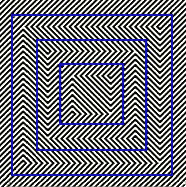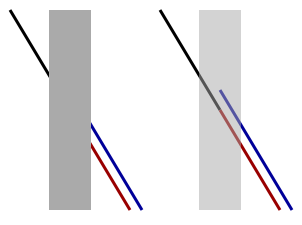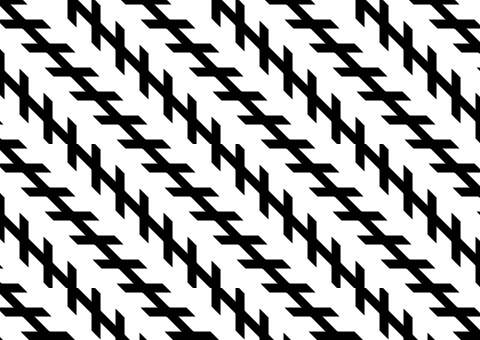Are the blue figures below, squares or parallelograms? Or rather, are some parallelograms and some squares?

Deceiving as it may be, the three blue shapes are all in fact blue squares. It’s the puzzling background that make them appear to be parallelograms. You can test this by moving some 2 - 3 metres away from your computer screen. At that point, the black and white herringbone-like pattern will start to merge together and appear gray, while the blue squares will be clearly defined.
The Poggendorff and the Zoellner illusion are believed to represent the combination of these two different, yet related illusory effects.
Each of these illusions proove our brain’s limitations in correctly assessing angles and trajectories in their relation to straight lines. These illusory effects combine in the drawing above to truly puzzle the brain.
Poggendorff's illusion is shown in picture below.

Looking at the figure shown on the left, it would seem that the black line is a straight extension the blue line. In exposing the area concealed beneath the gray shadow, as shown on the figure on the right, it reveals that the black line is an actual continuation of the red line and not the blue one.
Let’s take a look at Zöllner's illusion.

With this illusion, one gets the distinct impression that the long diagonal lines appear to be uneven, when in actual fact they are parallel. It is the short lines that criss-cross the diagonal lines that skew our perception and lead our brains to believe that the lines are distorted.






 English
English
 Français
Français


